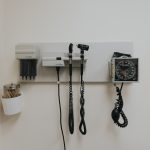Share
Physicians’ Notes
Two-problem Medicine
Colleagues:
Being newly retired after spending over 50 years as a physician-40 of them as a clinical lecturer and associate professor of internal medicine at the Royal Alexandra Hospital in Edmonton-I’ve had time to reflect on the practice of medicine in Alberta as I have both seen and practised it.
Over the past decade or so, I have watched with concern the growing trend of the “one or two problems per visit” practice in both office and ER settings. Moreover, I have seen the downstream effects of this practice far too often and ever more frequently as the practice became more and more common. Quite simply, it leads to bad medicine-sometimes dangerously bad medicine.
A single, underlying problem can and often does present with many different and seemingly unrelated symptoms. How is a patient supposed to guess which of their many health concerns are most important to disclose to their doctor, knowing that they may be cut short after sharing one or two symptoms?
One problem can have many issues
I present two typical case histories. Insignificant details have been altered or removed to protect patient privacy.
Case one
A 70+-year-old female with only stable chronic problems, such as controlled hypertension and very well-controlled seizure disorder, presented to her family physician with complaints of recent onset of headaches-mostly unilateral accompanied by transient diplopia, now resolved. She was given a prescription for an analgesic and an appointment for a CT scan of the head for one month later with no additional follow up arranged. Not satisfied with this, the patient presented to an ER hoping to have further investigations or consultations. The “one problem per visit” dictum ruled and she was simply told to continue the analgesic while waiting for the CT scan.
Still unsatisfied with her care and concerned about the diplopia even though it had resolved, she consulted an ophthalmologist who agreed to see her without a referral the next day. The ophthalmologist took a full history with no limit on problems and, upon hearing accompanying complaints of general malaise, occasional night sweat, and anorexia and weight loss, suspected a giant cell arteritis.
He promptly performed appropriate testing, including a temporal artery biopsy, which confirmed his suspicion. Needless to say, the delay of a month waiting for a CT scan might have resulted in blindness and/or a stroke. Worse, it is unlikely the CT scan would have made the diagnosis. Now, I am certain both the family physician and the ER physician, if they had taken a decent history without regard to any “one problem per visit” rule, would have suspected the correct diagnosis and taken appropriate diagnostic measures with appropriate urgency.
Case two
A 70-year-old male, previously healthy except for a recent (two months prior) diagnosis of pancreatic cancer presented to an ER with predominant complaints of swelling of the legs-actually quite severe and also somewhat asymmetric. Once again, even in the ER, the “one or two problems per visit” practice ruled. He was given a prescription for a diuretic and sent home.
The ER physician knew about the diagnosis of pancreatic cancer currently on treatment, but did not know about the patient’s past history of a thrombosis, the very recent history of several unexplained syncopal episodes and unusual breathlessness. The ER physician didn’t ask because he was dealing with one problem: the lower limb edema.
Needless to say, the patient was at very high risk of venous thromboembolism and pulmonary embolism and all of his symptoms would have alerted even the sleepiest ER physician of this risk-but only if the physician had pursued all the actual problems. It took an urgent call from a family friend (a physician) to finally alert the family MD to the need for further investigations.
Connecting the dots
If I reviewed all of my office and hospital patients from the last decade, I could find very many more similar case histories.
Very few patients know which of their many symptoms “belong together” or are a part of one underlying disease process, and equally few physicians are skilled enough to know whether a problem is isolated or if it conceals other complex symptoms pointing to unsuspected problems. Asking the patient to rebook if there are other problems doesn’t solve the problem as the next visit may be weeks away and some patients may have barriers to booking multiple appointments, such as mobility issues or far travel distances.
I do understand the rationale behind the “one or two problems per visit” practice. Talkative patients can wreak havoc on the office schedule, to say nothing of the cash flow. Patients who endlessly repeat the same long list of every problem they have on each visit can be both trying and time consuming. I also recognize that simply allowing the long-winded patient to ramble on can be equally problematic-they use the valuable time the doctor needs for a functional review of one or more problems and prevents the physician from effectively managing their steady flow of patients.
Attempting to solve these problems with a blanket “one or two problems per visit” rule isn’t the answer. It risks missing severe problems, poses risks to patient safety, destroys patient spontaneity in giving a proper narrative of their illness and too often will rob the physician of the goal-and subsequent joy-of solving problems successfully.
Yours sincerely,
A. Voth, MD, LMCC, FRCP, (Can) Fellow ACP
How VR is Giving a New Perspective into Ocular Degenerative Diseases
By Dr. Karim F. Damji, MD, FRCSC, MBA
Professor and Chair, Department of Ophthalmology & Visual Sciences, University of Alberta
Clinical Section Head for Ophthalmology, Edmonton Zone, Alberta Health Services
I have a strong interest in how virtual reality (VR) and augmented reality (AR) technology can play a role in my practice as an ophthalmologist. Typically, when I work with patients, I’m limited to paper brochures and videos that demonstrate what to expect with and without treatment.
This past fall, a new virtual experience called Through the Looking Glass was premiered at the second annual Eye Ball Gala. Through this immersive VR experience, users explored the world of Alice in Wonderland, completing tasks while experiencing simulated patterns of vision loss similar to what those living with ocular degenerative diseases (such as macular degeneration, cataracts and glaucoma) encounter each day.
Using VR technology innovation for educational purposes
We partnered with Edmonton-based KOVR to develop Through the Looking Glass. What started off as a way to show others what life is like with an ocular disease turned into an opportunity to further educate patients and their families, helping them gain a better understanding of what it means to live with vision loss.
In Through the Looking Glass, the user enters Wonderland and picks one of three mirrors, each representing a different condition. The condition intensifies as the user continues further into the journey. There are specific tasks to complete with each condition, and the vision loss makes the tasks far more challenging.
Bringing personal experiences to life builds greater understanding
Beyond the visuals of the VR program, what KOVR is able to offer in Through the Looking Glass is the opportunity to interact with an environment that’s been visually impaired. This brings the reality of living with an ocular disease closer. We can share this with patients and their loved ones to show what to expect as their conditions progress. We can also use the program to simulate different treatment options, which helps us determine the best strategies for patients.
During the development process for this VR program, we consulted with researchers, doctors, technicians and patients. Not everyone will experience an ocular condition in the same way. Having our patients try the simulations for themselves gave us valuable feedback that helped us create a more accurate depiction of the conditions.
Exploring future VR applications in ophthalmology
For future usage, more AR-focused approaches could permit users to experience these conditions in real time and in real environments. Through a technologically enhanced set of glasses, we could overlay simulations of the conditions. Users could then interact in environments, such as their homes, that they would need to navigate in their daily lives.
Never before have we been at a point in technology where we can understand on such an intimate level what a person experiences when faced with an ocular degenerative disease. Many of the conditions I assist patients with are treatable. But the first step is education. The better educated patients and their families are, the more empowered they are to address any health issue.
Want to submit an article to Messenger?
Email messenger@cpsa.ab.ca or read our submission guidelines.
























Comments for this post are now closed. If you would like to share your feedback on this topic, please email support@cpsa.ca.